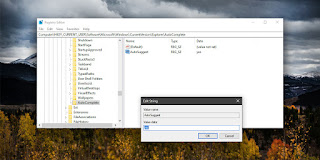AutoPlay
is a Windows feature that Microsoft first
introduced way
back in Windows 98. AutoPlay detects when removable devices such as
DVDs, flash drives, and camera memory cards are connected, and
automatically launches a designated program to play or
view any compatible content those devices contain. For
example, if you insert a DVD movie into your AutoPlay-capable Windows
PC, the DVD player app will launch and start playing the movie.
AutoPlay
can be a useful feature in that it makes it quicker to access your
content with common apps. But it can also become annoying for some
users who prefer to access their content manually or with different
applications. AutoPlay is enabled by default in Windows 10. If you
find the feature to be more annoying than helpful, here’s how to
disable it.
Disable
AutoPlay
To
disable AutoPlay in Windows 10, head to Start
> Settings > Devices > AutoPlay.
Users
have the option to disable AutoPlay completely by turning it off with
the first setting: Use
AutoPlay for all media and devices.
AutoPlay will be disabled as soon as you toggle the option to
the Off setting.
There’s no need to reboot or save your change.
Manage
AutoPlay Settings
Instead
of simply disabling AutoPlay, you can manage how it works for certain
devices. To do so, first leave the main AutoPlay toggle described
above set to the On position.
Next, look at the options under Choose
AutoPlay Defaults.
Your
own Settings window will look a bit different from the one in our
screenshots as each PC is unique. In general, you’ll see an option
for
“Removable
drives,” which covers devices like USB flash drives, and “Memory
cards,” which refers to your digital camera’s SD or Compact Flash
cards. You’ll also see specific references to certain other devices
such as external hard drives or, in the case of our screenshot,
mobile devices like the iPhone.
You
can click on the drop-down menu beneath each device type to set a
default AutoPlay action. You can also disable AutoPlay for that
device by choosing Take
no action.
For
example, in our screenshots above we’ve disabled AutoPlay for
Removable Devices and Memory Cards (“Take no action”), but we’ve
configured AutoPlay to launch File Explorer and show our photos each
time we connect our iPhone. If you frequently open the same type of
content in different applications and would like to be prompted each
time a device is connected, choose Ask
me every time.
Also note that you can trigger the “Ask Me” prompt regardless of
default setting by pressing and holding the Shift key on your
keyboard while you connect an AutoPlay-compatible device.
Changing
Advanced AutoPlay Settings via Control Panel
The
AutoPlay options in the Windows 10 Settings app are relatively
straightforward. Longtime Windows users, however, may notice that
these default options aren’t as granular as those found in previous
versions. Thankfully, those old advanced AutoPlay settings are still
available in the Control Panel.
Just head to Control Panel > Hardware and Sound > AutoPlay. Here, you’ll be able to choose default AutoPlay actions for all device types, including CDs, Blu-rays, and DVDs.
If
you’ve made too many changes and want to revert back to the default
AutoPlay settings, scroll to the bottom of the AutoPlay window in
Control Panel and click Reset
all defaults.




















